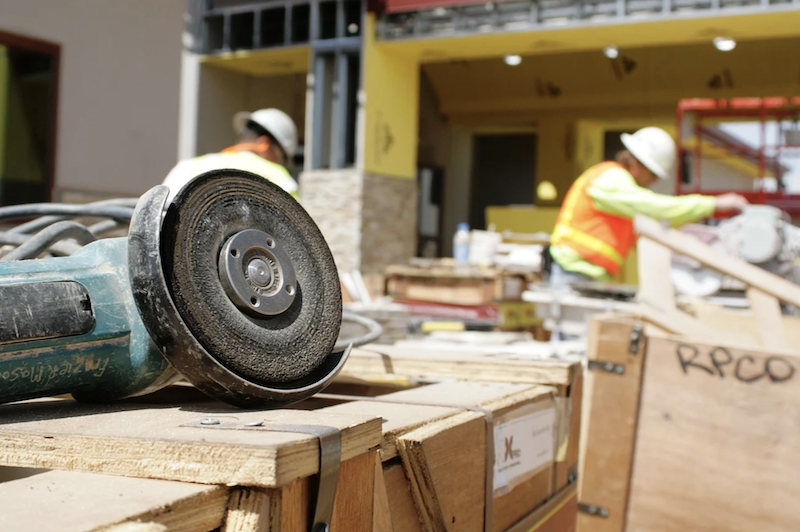The construction industry added 11,000 jobs between June and July but nonresidential construction employment remains far below pre-pandemic levels, according to an analysis by the Associated General Contractors of America of government data released today. Association officials said nonresidential construction has been affected by declining demand for projects, particularly for public infrastructure work, and urged Congress to quickly pass the new bipartisan infrastructure measure.
“Contractors are plagued by soaring materials costs, long or uncertain delivery times, and hesitancy by project owners to commit to construction,” said Ken Simonson, the association’s chief economist. “Recovery has been especially slow in infrastructure construction.”
Construction employment in July totaled 7,421,000, a gain of 11,000 from June, following three months of job losses. However, the rebound was limited to residential and specialty trade contractors, while nonresidential building and infrastructure construction firms continued to shed workers.
Residential building contractors such as homebuilders added 8,300 employees in July, while employment was unchanged among residential specialty trade contractors. The two residential segments have added a total of 58,500 employees, or 2.0%, to their workforce since February 2020.
In contrast, nonresidential building contractors shed 2,500 employees in July. Employment declined by 2,100 among heavy and civil engineering construction firms—the segment most involved with infrastructure. Nonresidential specialty trade contractors added 7,500 employees in the month. Following the huge loss of jobs between February and April 2020 at the beginning of the pandemic, infrastructure contractors have added back only 37% of lost jobs. Nonresidential building and specialty trade contractors have each regained about 60% of lost workers, while the total nonfarm payroll economy has recouped 75% of workers.
Simonson observed that an unprecedented number of materials are experiencing extreme price increases and long lead times for production or delivery to project sites. These problems mean fewer construction workers are being employed and some owners are delaying project starts, adding to the drag on industry employment. The economist noted that the association has just updated its Construction Inflation Alert, a guide to inform owners, officials, and others about the cost and supply-chain challenges.
Association officials noted the new infrastructure measure boosts federal investments in a wide range of infrastructure projects, which will help generate new demand in the nonresidential sector. They added the bill appears likely to pass in the Senate but that some members of the House want to delay action on the bipartisan measure until passing an unrelated, partisan, spending bill.
“The last thing Washington should be doing is holding up a much-needed, bipartisan infrastructure bill while commercial contractors struggle to add jobs,” said Stephen E. Sandherr, the association’s chief executive officer.
Related Stories
Market Data | Apr 4, 2016
ABC: Nonresidential spending slip in February no cause for alarm
Spending in the nonresidential sector totaled $690.3 billion on a seasonally adjusted, annualized basis in February. The figure is a step back but still significantly higher than one year ago.
Market Data | Mar 30, 2016
10 trends for commercial real estate: JLL report
The report looks at global threats and opportunities, and how CRE firms are managing their expectations for growth.
Market Data | Mar 23, 2016
AIA: Modest expansion for Architecture Billings Index
Business conditions softening most in Midwest in recent months.
Retail Centers | Mar 16, 2016
Food and technology will help tomorrow’s malls survive, says CallisonRTKL
CallisonRTKL foresees future retail centers as hubs with live/work/play components.
Market Data | Mar 6, 2016
Real estate execs measure success by how well they manage ‘talent,’ costs, and growth
A new CBRE survey finds more companies leaning toward “smarter” workspaces.
Market Data | Mar 1, 2016
ABC: Nonresidential spending regains momentum in January
Nonresidential construction spending expanded 2.5% on a monthly basis and 12.3% on a yearly basis, totaling $701.9 billion. Spending increased in January in 10 of 16 nonresidential construction sectors.
Market Data | Mar 1, 2016
Leopardo releases 2016 Construction Economics Report
This year’s report shows that spending in 2015 reached the highest level since the Great Recession. Total spending on U.S. construction grew 10.5% to $1.1 trillion, the largest year-over-year gain since 2007.
Market Data | Feb 26, 2016
JLL upbeat about construction through 2016
Its latest report cautions about ongoing cost increases related to finding skilled laborers.
Market Data | Feb 17, 2016
AIA reports slight contraction in Architecture Billings Index
Multifamily residential sector improving after sluggish 2015.
Market Data | Feb 11, 2016
AIA: Continued growth expected in nonresidential construction
The American Institute of Architects’ semi-annual Consensus Construction Forecast indicates a growth of 8% in construction spending in 2016, and 6.7% the following year.

















